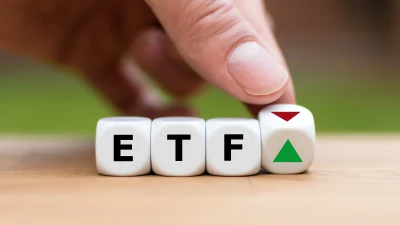Which is Australia’s best domestic equity ETF?



Stockspot has shared its favoured Australian equity ETF based on size, cost, slippage, liquidity, returns and track record.
The study surveyed SPDR S&P/ASX 200 ETF (STW), Vanguard Australian Shares Index ETF (VAS), iShares Core S&P/ASX 200 ETF (IOZ), VanEck Australian Equal Weight ETF (MVW) and Betashares Australia 200 ETF (A200).
Based on the six criteria, the platform said it opts for Vanguard Australian Shares Index ETF for its clients based on its low costs and consistent track record of lowering fees.
This ETF wins out over its closest competitor SPDR S&P/ASX 200 ETF as it has a broader ASX 300 exposure, a low tracking error and slippage, and a consistent return history.
These factors have led the Vanguard fund to dramatically surpass the SPDR fund when it comes to assets under management, even though they were both launched in the same year, with Vanguard holding $14.7 billion and SPDR holding $5 billion.
Regarding slippage, which covers how much an investor loses by crossing the spread when buying and selling an ETF, Vanguard has one of the lowest at 0.02 per cent. This is joint with Betashares Australia 200 ETF.
The Vanguard fund also has the highest liquidity with over $25 million traded per day.
Looking at returns, four funds have generated similar returns of around 10 per cent total return per annum, but the VanEck Australian Equal Weight ETF returned 9.1 per cent as it has a skew to smaller companies.
In conclusion, Stockspot founder Chris Brycki said: “VAS’ low expense ratio (0.07 per cent p.a.) and global track record of reducing costs. By comparison, the largest Australian share ETF (STW) waited seven years before it lowered its costs from 0.29 per cent to 0.19 per cent in December 2015, and then another five years to reduce to 0.13 per cent. It is not surprising that VAS overtook STW in July 2019, as the largest Australian share ETF.
“While MVW can go through some periods of good relative performance, we aren’t compelled by the equal-weight strategy or other non-market cap weighted strategies.
“Where our clients want more exposure to smaller shares, we recommend adding a pure small-cap tilt using the Vanguard MSCI Australian Small Companies Index ETF (VSO) as a theme.”
Recommended for you
First Sentier has announced it will transition the Stewart Investors investment management responsibilities to its affiliate investment team in light of three senior portfolio manager exits.
The $365 billion UK fund manager Royal London Asset Management is to launch two funds in Australia by the end of November as it seeks to build an international presence.
With ETF pricing becoming more competitive than ever, those active ETF vehicles priced higher than 120bps are the only segment of the popular product to see outflows.
Income Asset Management has promoted former ASIC commissioner, Danielle Press, as chair of its board following the retirement of John Nantes.












